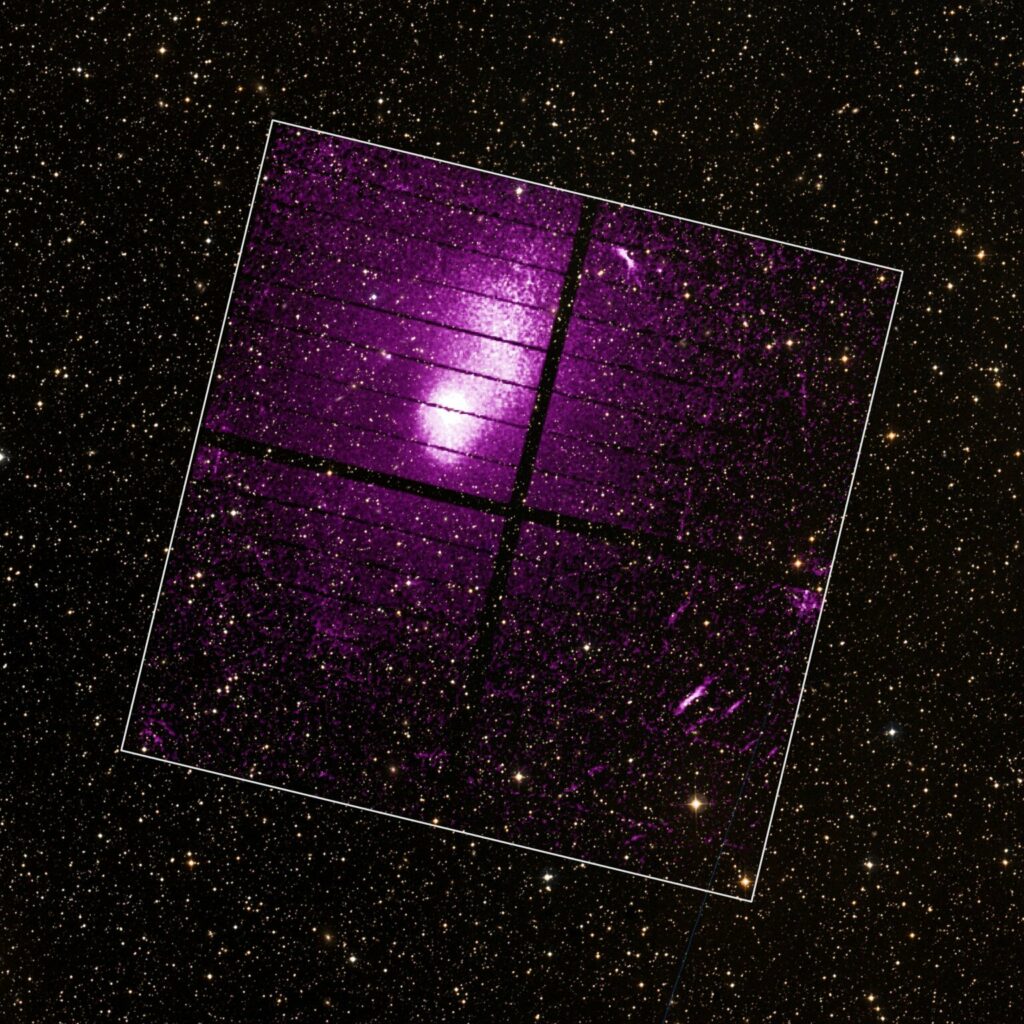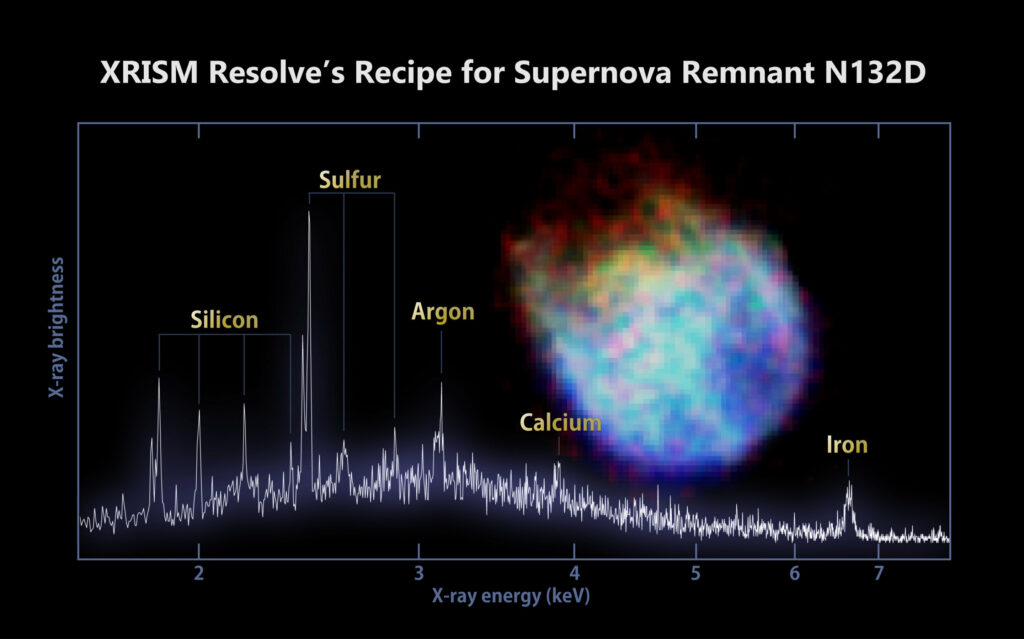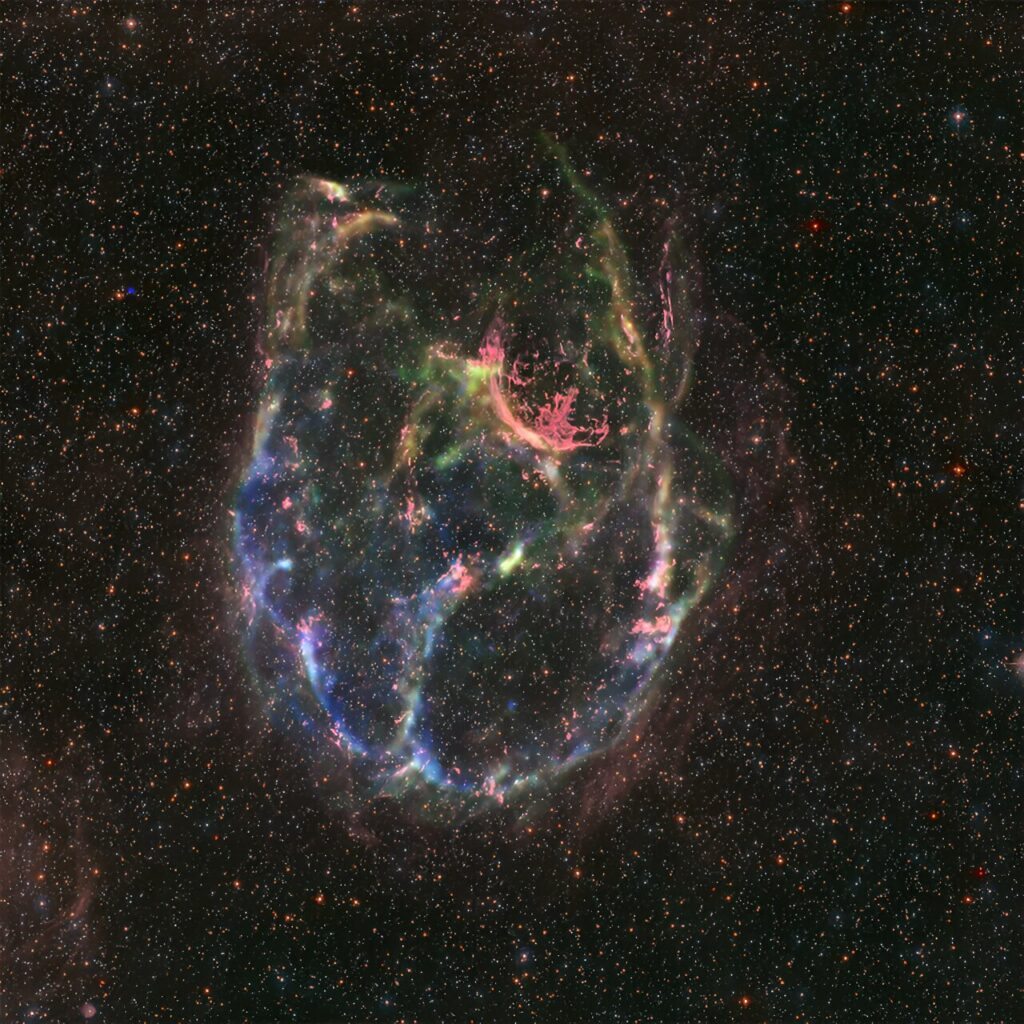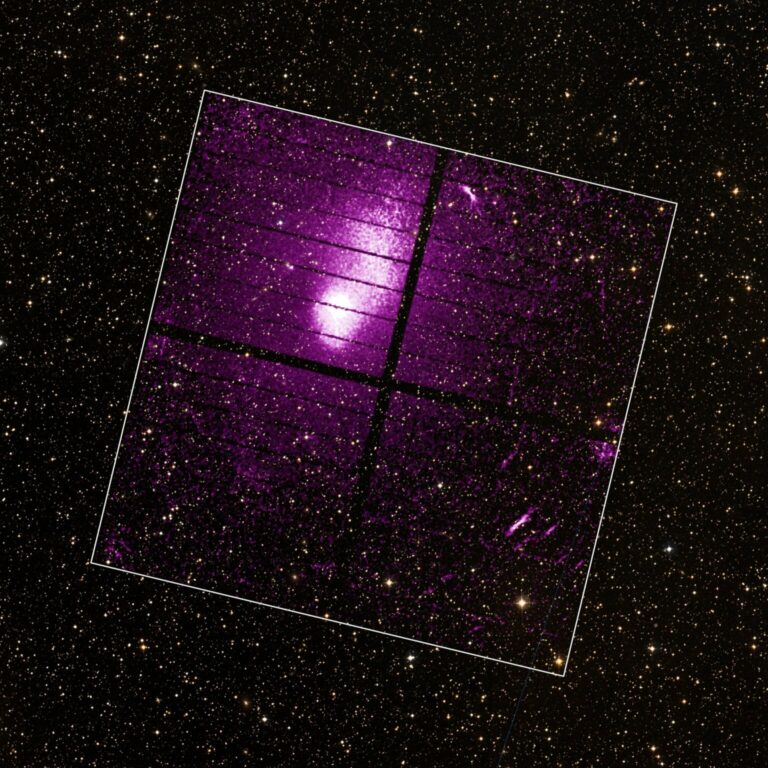NASA/JAXA XRISM Mission Unveils Inaugural Glimpse of the X-ray Cosmos
The XRISM (X-ray Imaging and Spectroscopy Mission) observatory, led by Japan, has unveiled an initial preview of the groundbreaking data it is poised to gather once scientific operations commence later this year. The satellite’s scientific team has shared a glimpse of a cluster comprising hundreds of galaxies and a spectrum capturing the remnants of stars in a nearby galaxy, offering scientists an intricate view of its chemical composition.
Richard Kelley, the U.S. principal investigator for XRISM at NASA’s Goddard Space Flight Center in Greenbelt, Maryland, expressed, “XRISM will provide the international science community with a fresh perspective on the concealed X-ray sky. We’ll not only observe X-ray images of these sources but also delve into their compositions, movements, and physical states.” Pronounced as “crism,” XRISM is spearheaded by JAXA (Japan Aerospace Exploration Agency) in collaboration with NASA, supplemented by contributions from the European Space Agency (ESA). The mission successfully launched on September 6, 2023.
Designed to detect X-rays with energies up to 12,000 electron volts, XRISM is tailored to scrutinize the hottest regions, largest structures, and objects with the most potent gravitational forces in the universe. To provide context, the energy of visible light typically ranges from 2 to 3 electron volts. Comprising two instruments, Resolve and Xtend, each situated at the focal point of an X-ray Mirror Assembly crafted at Goddard, the mission holds the promise of unraveling new dimensions in our understanding of the cosmos.

Developed by NASA and JAXA, Resolve stands as a microcalorimeter spectrometer. Housed within a refrigerator-sized container of liquid helium and operating at a temperature just slightly above absolute zero, Resolve utilizes a 6-by-6-pixel detector. Upon impact with Resolve’s detector, an X-ray imparts warmth to the device in proportion to its energy. Through precise measurement of each X-ray’s energy, the instrument furnishes unprecedented insights into the characteristics of the radiation source.
Utilizing Resolve, the mission team investigated N132D, a supernova remnant renowned as one of the brightest X-ray sources in the Large Magellanic Cloud. Situated approximately 160,000 light-years away in the southern constellation Dorado, this dwarf galaxy houses the remnants of an explosive event believed to have occurred around 3,000 years ago. The cataclysmic event unfolded when a star, approximately 15 times the mass of the sun, exhausted its fuel, underwent collapse, and ultimately exploded.
The Resolve spectrum reveals distinctive peaks linked to silicon, sulfur, calcium, argon, and iron. This represents the most intricate X-ray spectrum ever captured for this celestial object, underscoring the mission’s potential for groundbreaking scientific exploration as it transitions to regular operations in 2024. “These elements originated in the progenitor star and were expelled during its supernova explosion,” explained Brian Williams, NASA’s XRISM project scientist at Goddard, emphasizing the profound scientific contributions expected from the mission.

“Resolve will provide us with the capability to discern the shapes of these spectral lines in a manner previously unattainable, enabling us to not only ascertain the abundances of different elements but also their temperatures, densities, and motion directions with unprecedented precision. This information allows us to reconstruct details about the original star and the ensuing explosion.
” XRISM’s second instrument, Xtend, serves as an X-ray imager developed by JAXA. It furnishes XRISM with an expansive field of view, enabling observations covering an area approximately 60% larger than the average apparent size of the full moon. Xtend captured an X-ray image of Abell 2319, an affluent galaxy cluster situated around 770 million light-years away in the northern constellation Cygnus.
As the fifth brightest X-ray cluster in the sky, Abell 2319 is presently undergoing a significant merger event, and Xtend’s wide field of view effectively showcases the cluster, which spans 3 million light-years. “Even in the early stages of the commissioning process, Resolve is surpassing our initial expectations,” remarked Lillian Reichenthal, NASA’s XRISM project manager at Goddard. “Our aim was to achieve a spectral resolution of 7 electron volts with the instrument, but now, in orbit, we’re achieving 5. This means we’ll obtain even more intricate chemical maps with each spectrum XRISM captures.”

Resolve is demonstrating remarkable performance and engaging in compelling scientific endeavors, notwithstanding a challenge with its detector’s aperture door. The door, initially intended to shield the detector pre-launch, has encountered difficulties in opening as scheduled, even after multiple attempts.
This impediment results in the door blocking lower-energy X-rays, limiting the mission to 1,700 electron volts instead of the intended 300. The XRISM team is actively delving into the anomaly, exploring various strategies to address the door-opening issue. It’s important to note that the Xtend instrument remains unaffected by this complication.
This article is republished from PhysORG under a Creative Commons license. Read the original article.
Do not forget to share your opinion with us to provide you with the best posts !




0 Comments